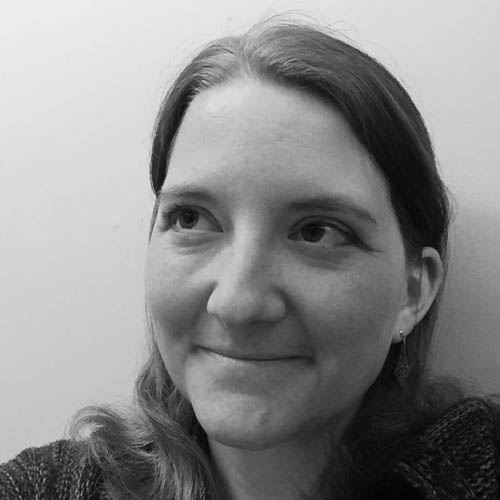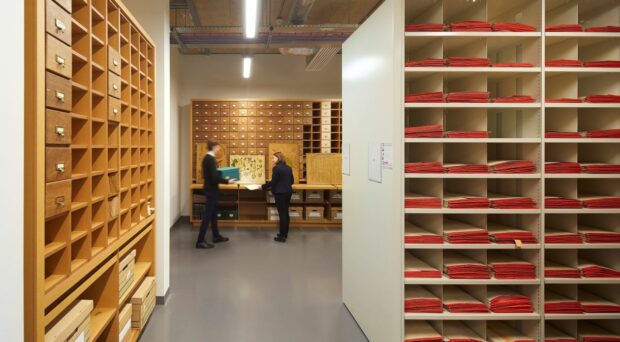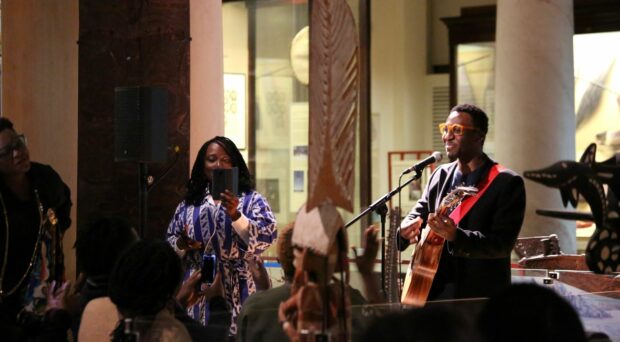In 2020, Playlanders was chosen as ‘Playgroup in Residence’ at the Fitzwilliam Museum. After the research residency came to a premature end due to coronavirus, staff at the museum and playgroup have continued to find ways to help the children build connections with art.
In previous years Fitzwilliam Museum has enjoyed welcoming children from Playlanders on visits, not least during the ‘Fitzlanders’ residency research project. However, plans for a visit in the Summer, and then the Autumn of 2020 had to be postponed due to the pandemic. During this time, the playgroup remained open, but the Museum was closed. Staff from the Museum shared resources with the playgroup practitioners, who devised a creative project with the children drawing inspiration from artworks in the collection.
Members of the Learning Team had previously developed ‘Relax, Look, Imagine’ postcards to help adults connect with some of the most popular paintings in the collection. A set of these was sent to the playgroup, along with some good quality paintbrushes.
Building on creative activities that had worked well during the residency at the Museum, playgroup staff encouraged the children to see that not all art is made working individually sitting at a table. Together they created a huge rainbow on the floor using colourful loose parts and toys from around the playgroup. This encouraged looking closely and thinking carefully about shape and composition.
This led into looking carefully at Steer’s Paddling at Walberswick and recreating it in the form of a large floor collage using fabrics and other materials. The children aimed to match the lines, shapes, and colours as closely as they could to the painting.
Robin* (aged 4) said, ‘Man! Seaside! We made it…It looks great, what we made. It looks the same as the artist’s picture.’
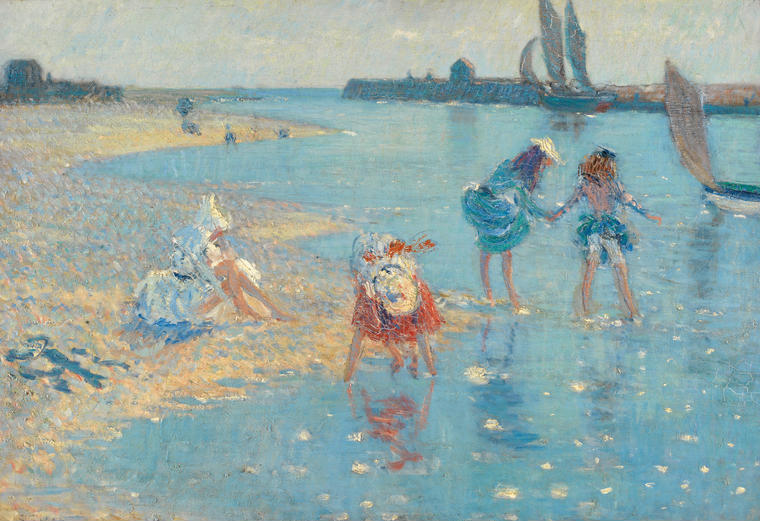
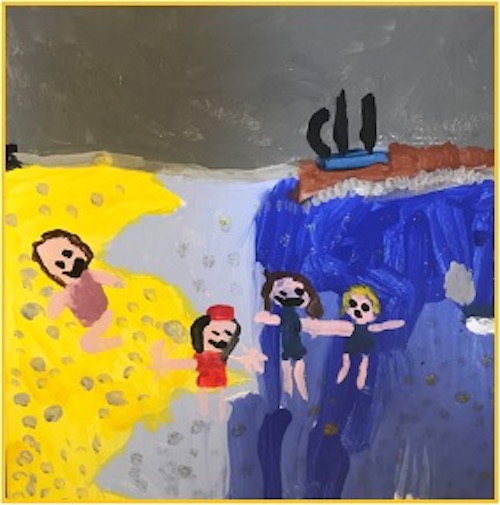
Having talked in depth about what they could see in the picture, from the sun sparking on the sea, to the boats in the background, to the people paddling in the surf, the children wrote poems based on their own experiences. Here is four year old Lauren’s poem, in which she draws on all her senses to imagine being on the beach like the children in the picture:
At the seaside
You can build a sandcastle
You could hear the seagulls
You could dig with a spade.
At the seaside You put sand in a bucket
You could hear a crab snip, snip, snipping
You can walk on the sand and it’s very quiet.
At the seaside
You could paddle in the sea.
You could go for a swim.
If you fall over in the sea with your mouth open, water goes in.
“YUCK!” At the seaside
It is fun.
The children also looked closely at Sisley’s painting: A street, possibly in Port Marly, exploring how the differently sized buildings created a sense of perspective, and discussing the cloud shapes in the sky: ‘a teapot pouring tea into cup,’ according to Luc (3) while Chloe (4) saw ‘a dragon’. The children recreated this picture using sponge painting techniques.
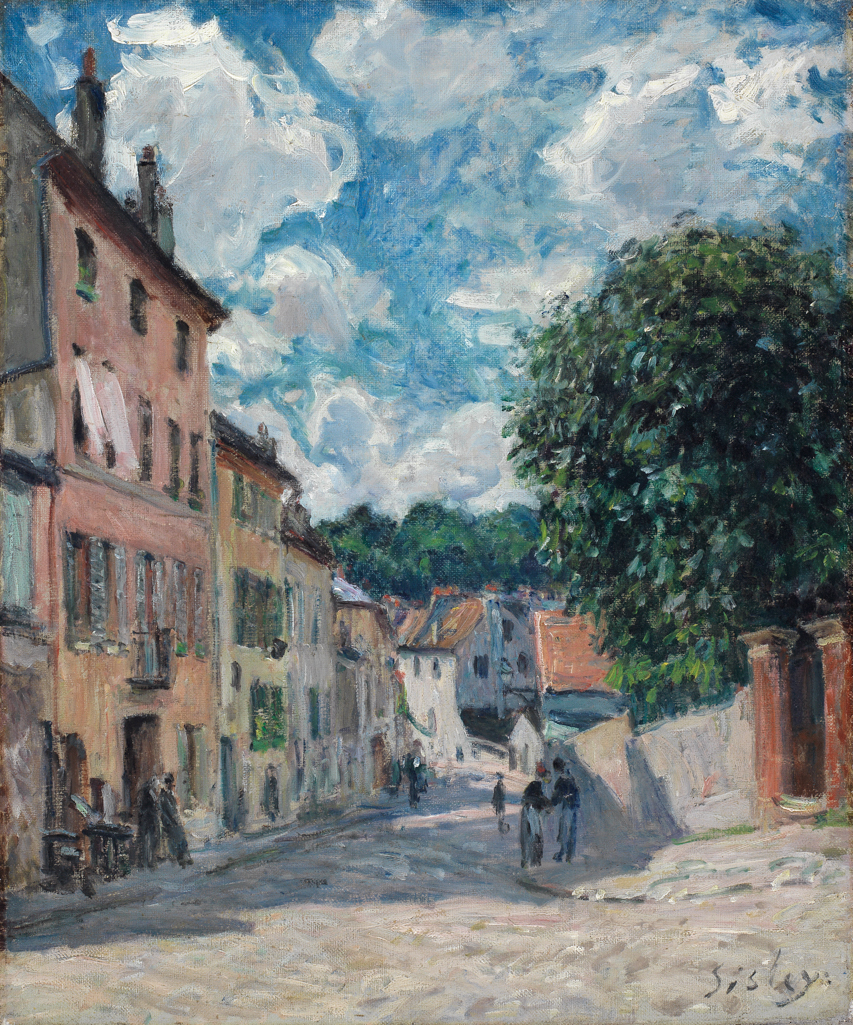
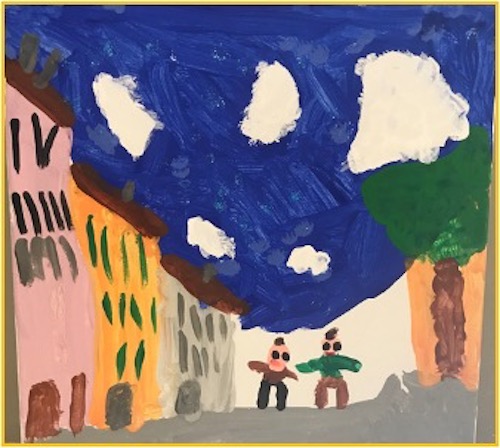
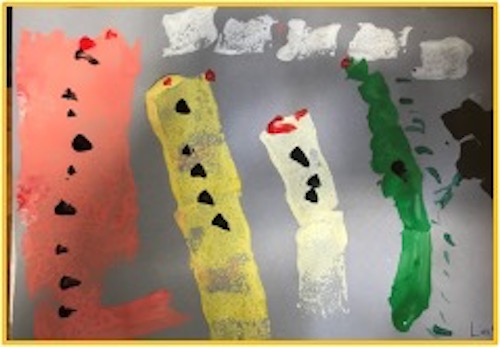
Finally, the group talked about Monet’s Springtime. What colours can be seen in the blossom? What shapes are the trees making? What are the people doing there? They explored the composition of the picture by making tree shapes using pipe cleaners and adding tissue paper blossom.
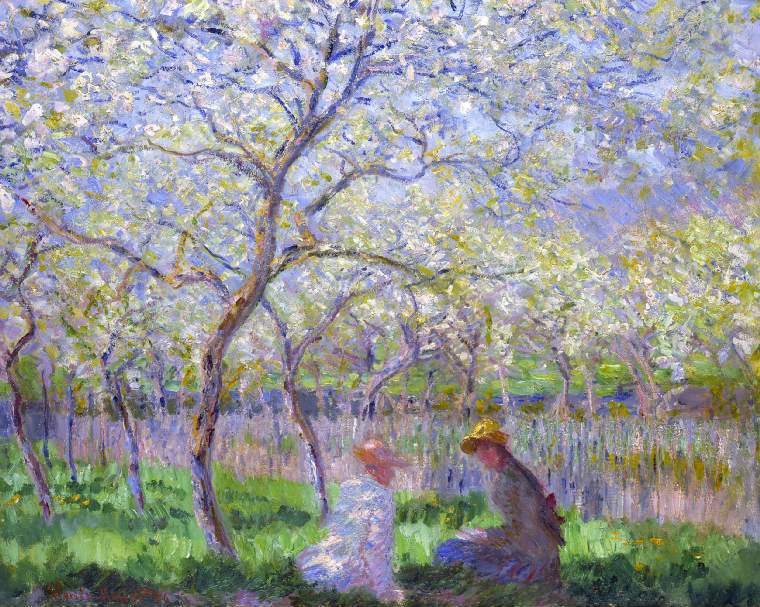
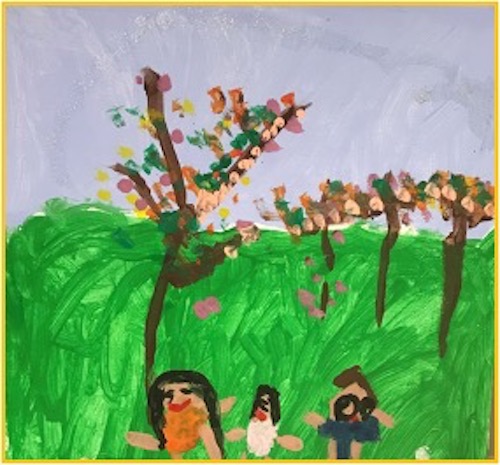
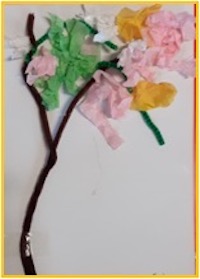
Having explored the paintings through close looking, discussion, and making activities, it was time for the children to create their own exhibition. Each child chose their favourite painting to recreate on a large canvas. They adapted what they had seen to make the pictures their own: putting their own families into the frame, for example, instead of the people in the original paintings. ‘I need beige skin,’ said Salim (4), while painting himself, Mummy, Daddy and Baby paddling at Walberswick.
The children each created a really beautiful painting for the exhibition. Each one was unique to the young artist that created it, but clearly inspired by the artworks that they had explored together. Throughout the project the children understood that the real paintings that their post cards were based on are housed in the Fitzwilliam Museum, and that people can go and see them when the Museum is open. As the Museum was closed at the time of the art project, the group decided to put on an exhibition of their own!
Nicola Wallis and Kate Noble from the Museum Learning team were delighted to be invited to come and view the exhibition in the Church Hall where the Playgroup meets. Each painting was displayed with a label showing the title and the artist, just like in the Museum galleries. The children talked us through the process and decisions they had made in creating the final pieces. We were absolutely delighted to see the incredible paintings the children had made, and to hear the sophisticated thinking that had gone into them.
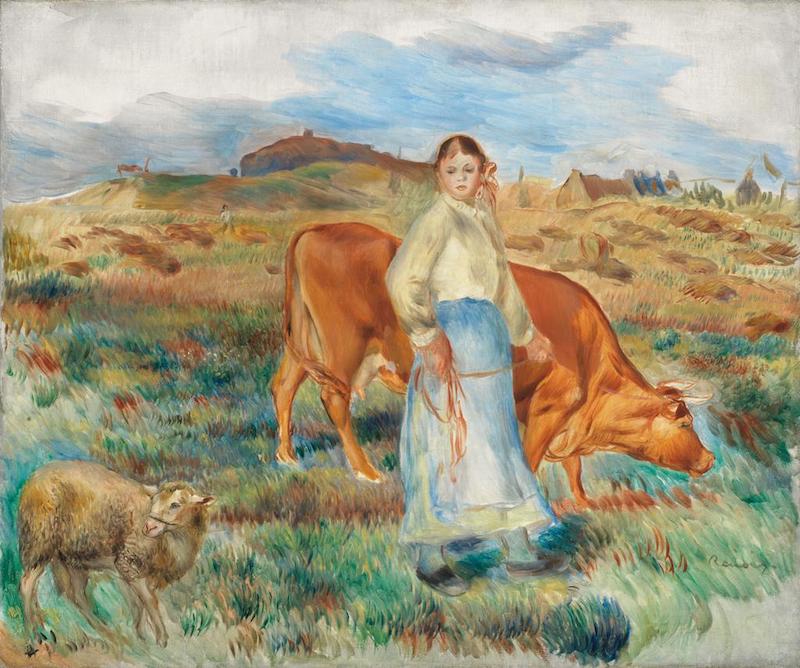
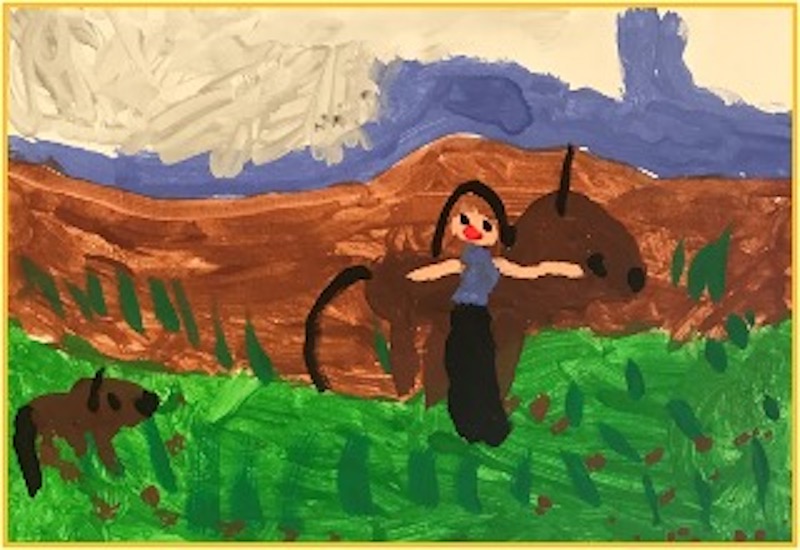
Staff at the Playgroup found that the children were apprehensive at the start of the process, but gained confidence as they practiced and talked through ideas and techniques with each other and with the adults. We felt that the careful support of the playgroup practitioners, and the fact that they offered the children unhurried time to look, to explore, and to talk, before moving towards the final creations was key to the success of the project. Holding the exhibition – at which all the children received a certificate, rosette, and a pack of Relax, Look, Imagine postcards – was a great way to celebrate the children’s achievements, and to find a connection with the work of other artists, even while the Museum was closed:
‘As they went home we could hear them excitedly telling their parents that Nicola and Kate from the Museum, who work where the real pictures are, had been and looked at what they had done.’
We can’t wait to welcome the children from Playlanders back to the Museum in June, when we will be sure to spend time looking at the paintings that inspired them.
If you’d like to know more about Museum activities for children in the Early Years, please contact Nicola Wallis – nlw30@cam.ac.uk
You can read more about the research project with the Fitzwilliam Museum and Playlanders, here
Playlanders is a playgroup in North Cambridge for children aged between 2 and 4 years. You can find out more here
*We’ve changed the children’s names for reasons of safeguarding. Special thanks to the children and staff at Playlanders for creating, documenting, and sharing this project with us.

